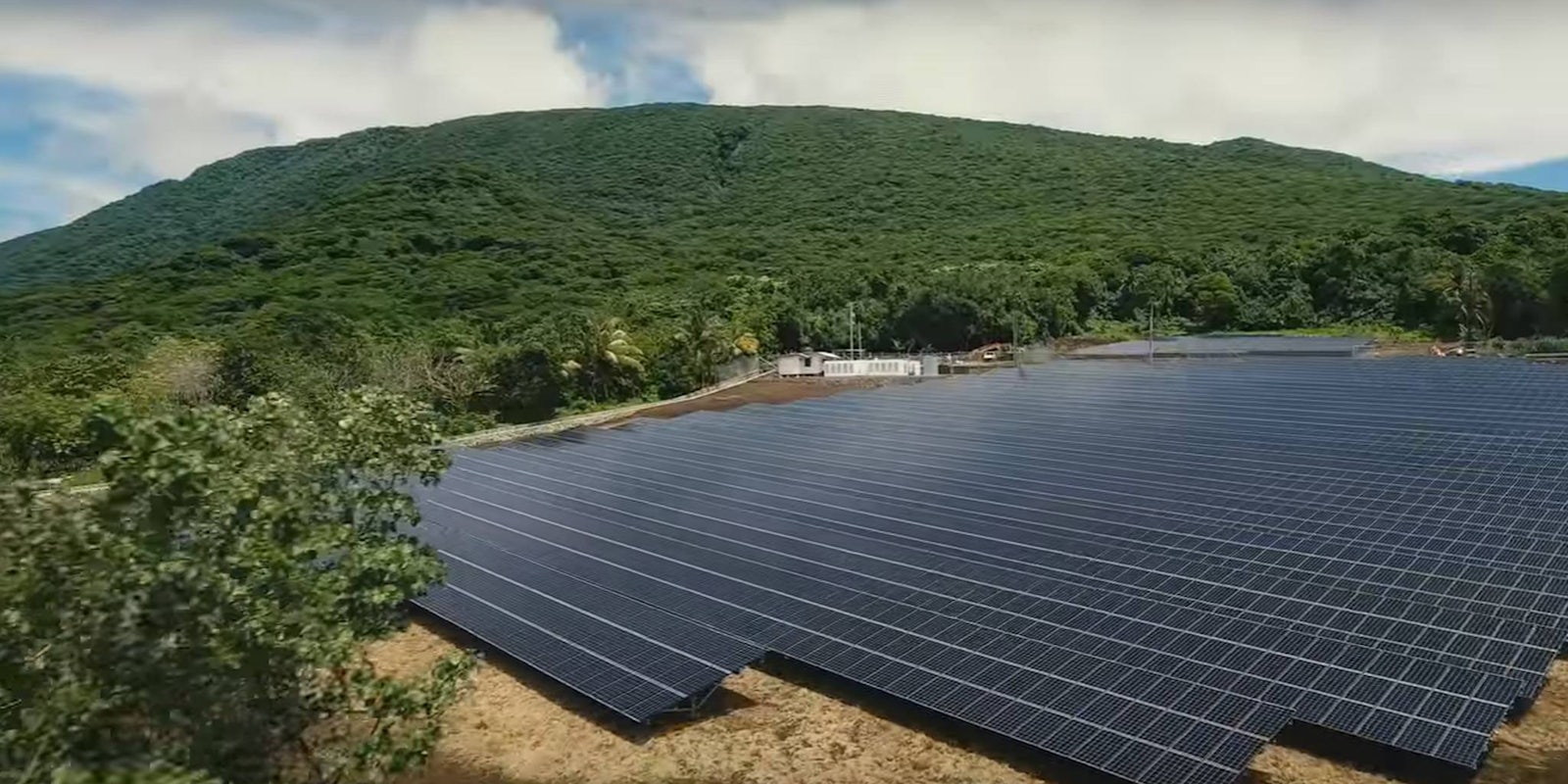On the heels of the news that the company had acquired solar energy startup SolarCity, Tesla has announced it is currently running nearly an entire island off of a solar energy microgrid.
The 1.4-megawatt grid, located on the isle of Ta’u in American Samoa, is made up of 5,328 solar panels and 60 Tesla Powerpacks, which store up to 6 megawatt-hours of energy. These packs allow the island to keep power for up to three days without sunlight, a useful feature during storm season, when clouds may block natural light.
Before the switch to solar energy, Ta’u got its energy mainly from diesel generators, burning hundreds of gallons of fuel each day. Beyond the environmental impact of using diesel generators, all that gas gets expensive over time. Solar allows the island to save money not just on fuel costs, but the cost of transporting and storing fuel as well.
Now before you say “if they can do it, why can’t we,” it’s important to look at what makes Ta’u the ideal test site for such an experiment. First off, there’s a limited population: Less than 600 people live on the island, so they have relatively limited power needs. Producing enough energy for an entire city would be a dramatically more challenging task, especially one located in an area with a cloudier climate.
However, the use of Powerpacks alongside solar gives us a look at Tesla’s long-term game plan when it comes to spreading solar power. The company has spoken for years about batteries that can power our homes free of an electrical grid. Ta’u is now ground zero for that experiment, a place where batteries and solar panels work together to provide for the basic needs of a group of people. This technology may not be ready for Appalachia just yet, but every big idea has to start somewhere. You can watch a video about the Ta’u microgrid here.
H/T Engadget
